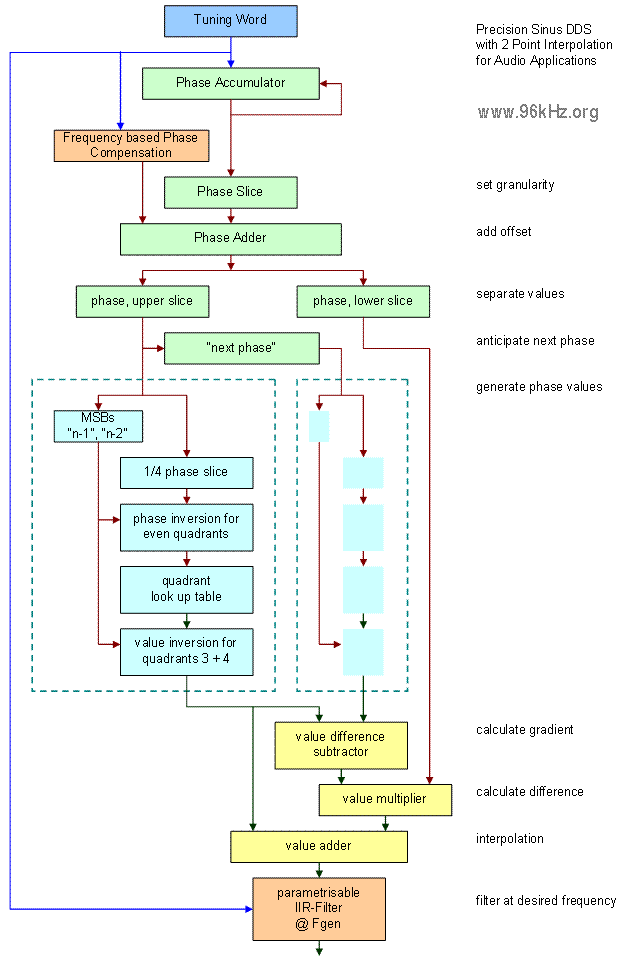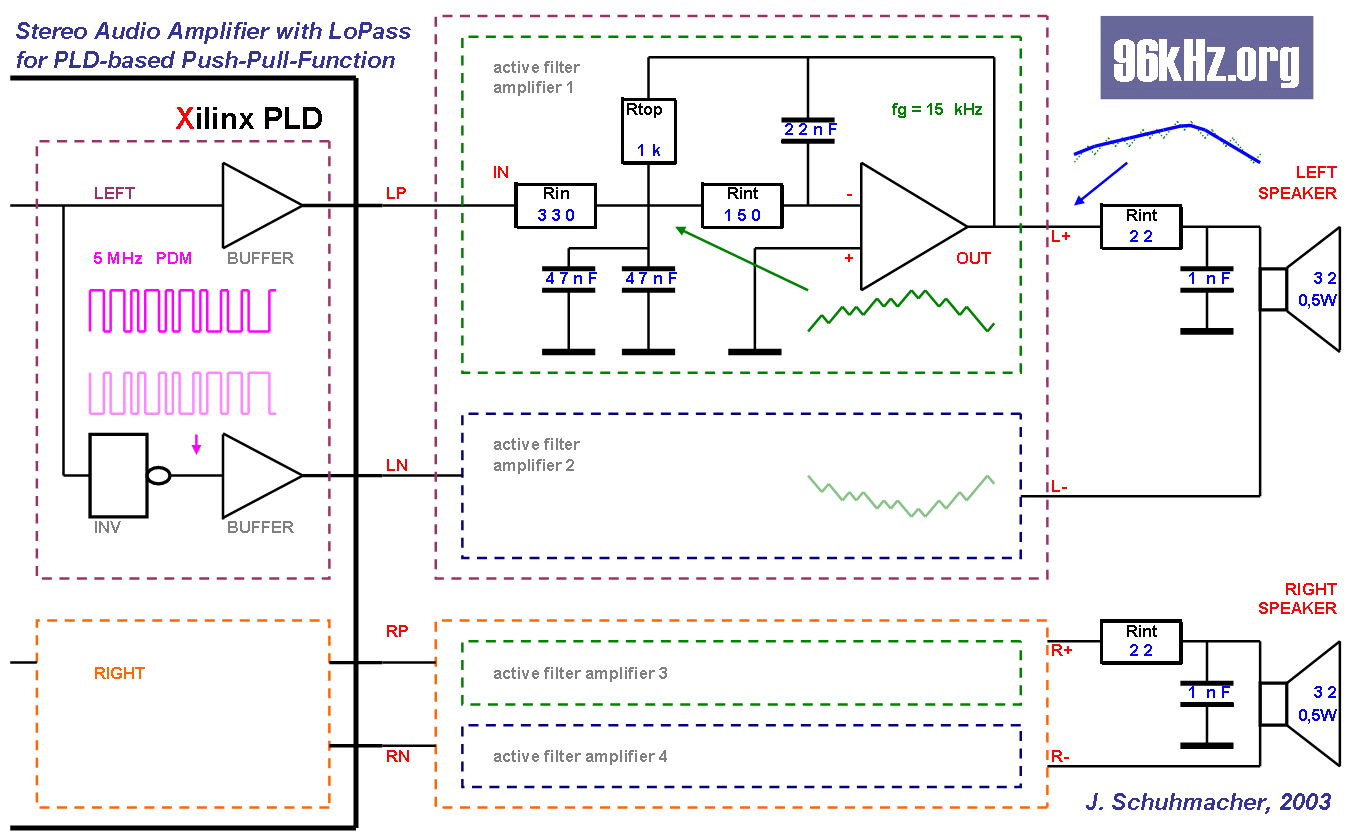| 96 kHz.org |
| Advanced Audio Recording |
|
A Stereo Push-Pull Amplifier for Audio with programmable logical devices In this approach I am showing an idea to equip digital programmable devices with a stereo audio output. This is required, because current logical devices do not have a DAC included and interfacing a common DAC again required a number of PINs which are limited.
Sound Generation Typically audio signals in logical devices are generated with DDS techniques. A simple PLD-based circuit is presented here:
Sound Output The data stream is finally transformed into a PWM, a PDM or an audio signal standard like ADPCM and sent to DAC. Here we are using an operational amplifier with a filter design in order to transform the digital data stream directly to an analog signal being able to drive a headphone speaker.
The design had been derived from the mono amplifier design with analog filter, introduced some time ago. In this case we are using a Xilinx PLD running at up to 10 MHz clock frequency. Unlike in the design before, we are using 4 PLD pins now to perform both, push-pull method and stereo output. The complete electronic design fits onto a small experimental PCB and uses one IC only (having 4 OPAMPS included) and some peripheral circuitry. Due to the limited frequency-bandwidth-product of this OPAMP, some small amount of high frequent ripple might occur and is high cutted at it's output before entering the headphone speakers. Learn more about the function of this circuit in the former article mono amplifier.
Sound Samples
Read More Creating Sine Waves with digital devices like PLDs
Related Information mono amplifier design with analog filter
|
| © 2003 Jürgen Schuhmacher |

